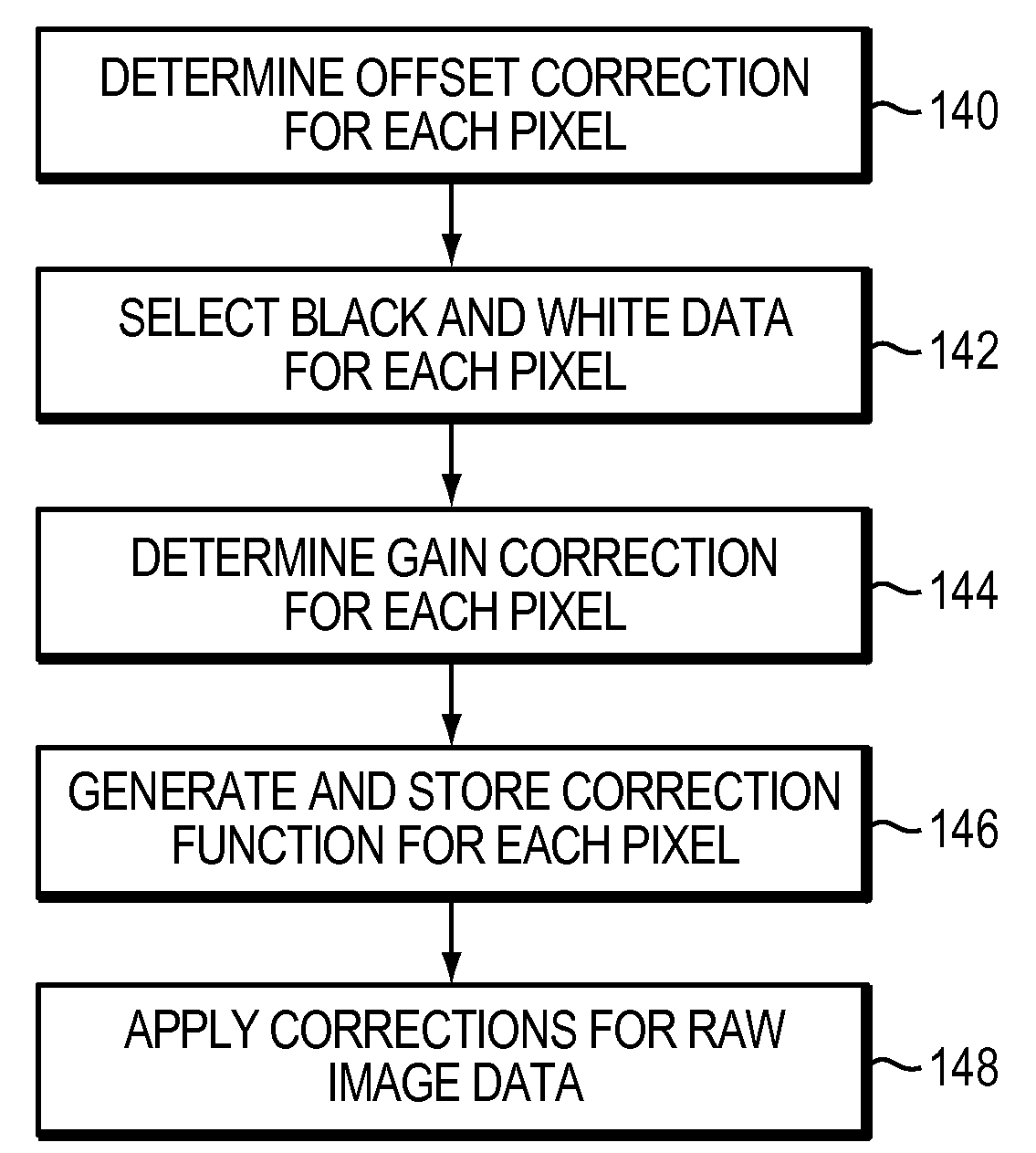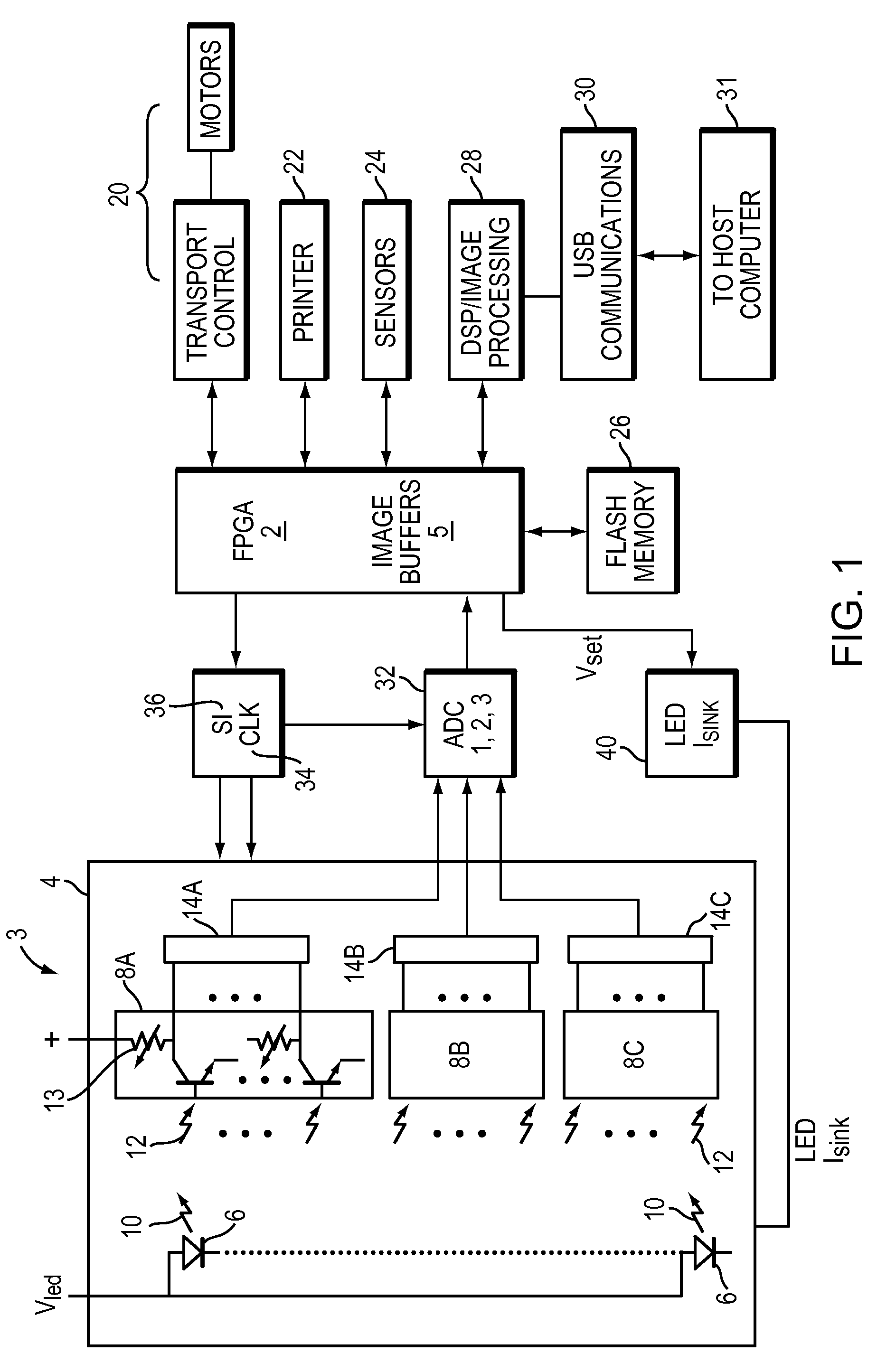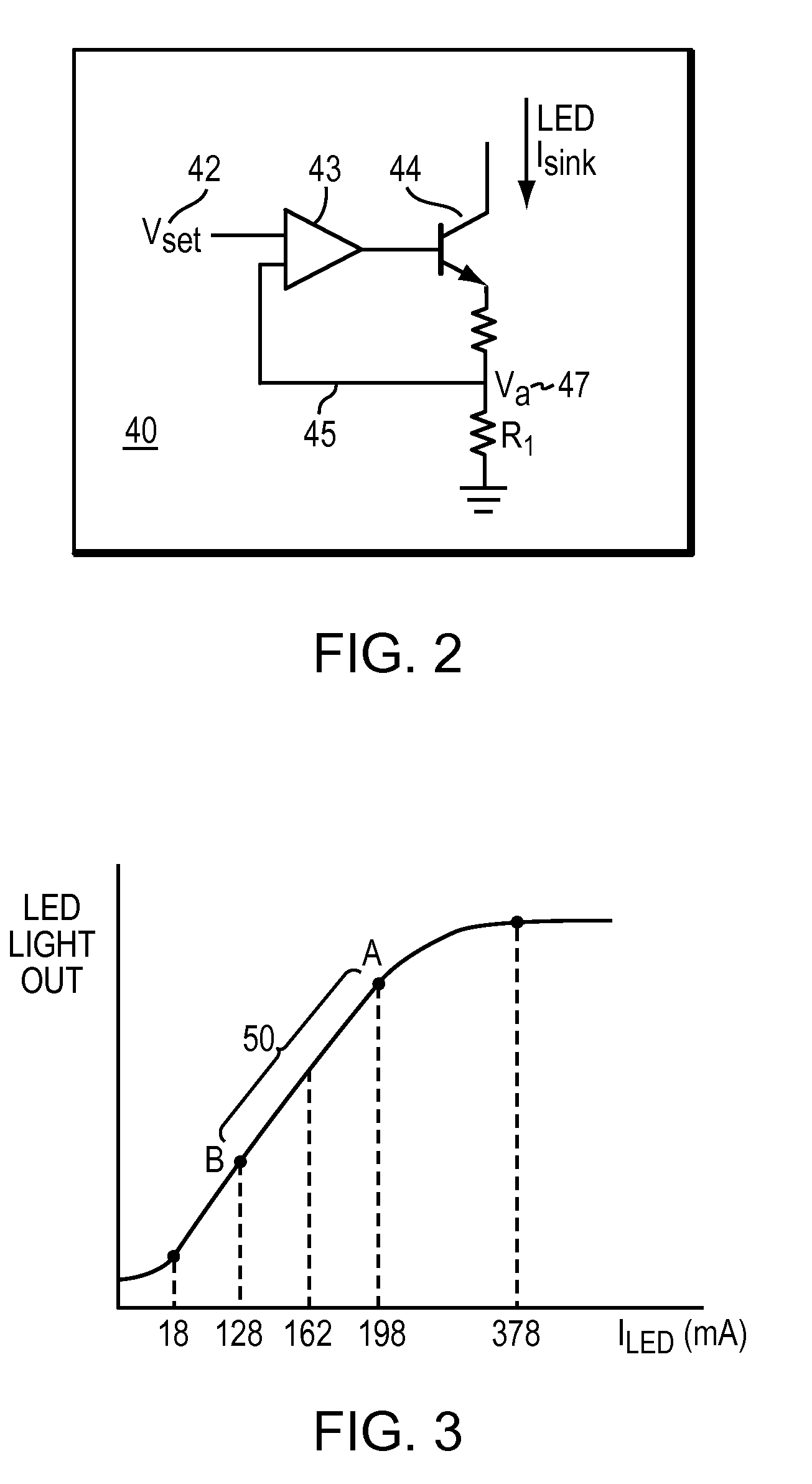System and method for calibrating an optical reader system
- Summary
- Abstract
- Description
- Claims
- Application Information
AI Technical Summary
Benefits of technology
Problems solved by technology
Method used
Image
Examples
Embodiment Construction
[0037]FIG. 1 is a block diagram schematic representation of an optical reader system incorporating the present invention. FIG. 1 illustrates an optical reader 3 of LEDs (light emitting diodes) 6 and three banks of photo-transistors 8A, 8B, and 8C. Additional optics, electronics and hardware that are employed in conjunction with the present invention, and known to those skilled in the art, are not shown in FIG. 1, and are only inferentially discussed herein.
[0038]A FPGA 2 (field programmable gate array) controls the reader 3. The reader 3 includes a bar (not shown) mounting a row of LEDs 6 that extends horizontally across a document (not shown) to be read. The bar also mounts a row of photo-transistors arranged in three groups, 8A, 8B and 8C, respectively. Illustratively, each group of photo-transistors 8A, 8B, 8C contains 576 photo-transistors or, collectively (in this application) 1728 photo-transistors, where each photo-transistor constitutes one pixel (picture element). If a shee...
PUM
 Login to View More
Login to View More Abstract
Description
Claims
Application Information
 Login to View More
Login to View More - R&D
- Intellectual Property
- Life Sciences
- Materials
- Tech Scout
- Unparalleled Data Quality
- Higher Quality Content
- 60% Fewer Hallucinations
Browse by: Latest US Patents, China's latest patents, Technical Efficacy Thesaurus, Application Domain, Technology Topic, Popular Technical Reports.
© 2025 PatSnap. All rights reserved.Legal|Privacy policy|Modern Slavery Act Transparency Statement|Sitemap|About US| Contact US: help@patsnap.com



